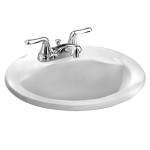How To Mix Bathroom Tile Grout for a Professional Finish
Achieving a professional-looking tile installation in a bathroom hinges significantly on the proper mixing and application of grout. Grout fills the spaces between tiles, providing a finished aesthetic, preventing water intrusion, and structurally reinforcing the tiled surface. Incorrectly mixed grout can lead to a variety of problems, including cracking, crumbling, inconsistent color, and ultimately, the need for costly repairs. This article provides a comprehensive guide on how to mix bathroom tile grout effectively, ensuring a durable and visually appealing result.
Prior to commencing the grout mixing process, it is crucial to select the appropriate type of grout for the specific bathroom tile and application. There are primarily three types of grout commonly used in bathrooms: cement-based grout (sanded and unsanded), epoxy grout, and furan grout. Cement-based grout is the most prevalent and economical option, suitable for most residential bathroom applications. Sanded grout contains fine sand particles and is recommended for grout lines wider than 1/8 inch. Unsanded grout, also known as non-sanded grout, is used for narrower grout lines, typically less than 1/8 inch, as it avoids scratching delicate tile surfaces. Epoxy grout is a more expensive, two-part system known for its superior stain resistance, durability, and impermeability. It is ideal for areas prone to moisture and staining, such as shower floors and backsplashes. Furan grout is rarely used in residential bathrooms and is mostly designated for industrial or commercial settings due to its resistance to harsh chemicals.
Once the appropriate grout type has been selected, the next step involves gathering the necessary tools and materials. These include: the selected grout powder, clean water (or the epoxy grout activator), a grout mixing bucket, a grout float, a margin trowel, a sponge, a clean dry cloth, measuring cups or a scale for accurate proportioning, safety glasses, and rubber gloves. Wearing safety glasses and rubber gloves is essential to protect the eyes and skin from potential irritation caused by the grout.
Key Point 1: Understanding Grout Ratios and Achieving the Correct Consistency
The correct mixing ratio of grout powder to water (or activator) is paramount to achieving the desired consistency and performance. This ratio is typically specified by the grout manufacturer on the product's packaging and must be adhered to meticulously. Deviating from the recommended ratio can result in a grout mixture that is either too wet (leading to excessive shrinkage and cracking) or too dry (resulting in poor adhesion and difficulty in application). Always refer to the manufacturer's instructions for the specific grout being used, as ratios can vary between different brands and grout types.
When measuring the grout powder and water, accuracy is key. Use measuring cups or a scale to ensure precise proportions. For smaller batches, measuring cups may suffice, but for larger quantities, a scale provides more accurate results. Start by adding the water (or activator) to the mixing bucket first. Then, gradually add the grout powder while continuously mixing. This helps to prevent clumping and ensures a consistent mixture.
The mixing process should be thorough and deliberate. Use a margin trowel to mix the grout, scraping the sides and bottom of the bucket to ensure that all the powder is fully incorporated into the water. Continue mixing until the grout achieves a smooth, uniform consistency. The ideal consistency should resemble that of a thick paste or peanut butter. It should be pliable enough to spread easily but not so runny that it drips off the trowel. The grout should hold its shape when scooped up with the trowel.
Once the grout appears to be properly mixed, allow it to "slake" or "slump" for the time specified by the manufacturer. This period allows the grout to fully hydrate and reach its optimal workability. Slaking times can range from 5 to 10 minutes, depending on the grout type. After the slaking period, remix the grout briefly before applying it to the tile surface. Do not add more water at this stage unless the grout remains excessively dry, and then add only a very small amount at a time, mixing thoroughly after each addition.
Key Point 2: Grout Application Techniques and Best Practices
Proper grout application is essential for achieving a professional finish and ensuring the long-term performance of the tiled surface. Before applying the grout, ensure that the tile joints are clean and free of any debris, spacers, or adhesive residue. Use a utility knife or grout saw to remove any obstructions. Lightly dampen the tile surface with a sponge, but avoid over-wetting, as excess water can dilute the grout and weaken its bond.
Using a grout float, apply the grout to the tile surface at a 45-degree angle, pressing it firmly into the grout lines. Work in small sections at a time, ensuring that all the grout lines are completely filled. The grout float should be held at an angle to effectively force the grout into the joints and remove excess grout from the tile surface. Apply sufficient pressure to compact the grout within the lines, eliminating any air pockets or voids.
Once the grout lines are filled, remove the excess grout from the tile surface using the edge of the grout float. Hold the float at a sharp angle to the tile surface and scrape off the excess grout in a diagonal motion. Avoid applying excessive pressure, as this can pull grout out of the joints. The goal is to remove the bulk of the excess grout while leaving the grout lines filled and compacted.
After removing the excess grout, allow the grout to set slightly before proceeding with the initial cleanup. The setting time will vary depending on the grout type and environmental conditions, but typically ranges from 15 to 30 minutes. The grout should be firm enough to resist being pulled out of the joints during cleanup, but still pliable enough to be shaped and smoothed.
Key Point 3: Cleaning and Finishing the Grout Lines
Cleaning and finishing the grout lines is a critical step in achieving a professional and aesthetically pleasing result. This process involves removing the grout haze from the tile surface and smoothing the grout lines to create a uniform and consistent appearance. Begin by using a damp sponge to gently wipe the tile surface, removing any remaining grout haze. Use a clean sponge and clean water frequently to avoid spreading the grout haze back onto the tile.
Wring out the sponge thoroughly after each wipe to prevent excess water from diluting the grout. Wipe in a circular motion, being careful not to apply too much pressure, as this can disrupt the grout lines. If the grout haze is particularly stubborn, consider using a grout haze remover specifically designed for the type of grout used. Follow the manufacturer's instructions carefully when using grout haze remover, as some products can damage certain types of tile.
After removing the grout haze, use a grout sponge or a specialized grout finishing tool to shape and smooth the grout lines. This step helps to create a consistent and uniform appearance and removes any imperfections or irregularities in the grout surface. Gently run the sponge or finishing tool along the grout lines, applying light pressure to smooth and shape the grout. Avoid pressing too hard, as this can remove too much grout from the joints.
Once the grout lines are smoothed and shaped, allow the grout to cure completely according to the manufacturer's instructions. Curing times can range from 24 to 72 hours, depending on the grout type and environmental conditions. During the curing period, protect the tiled surface from moisture and foot traffic. After the grout has cured, apply a grout sealer to protect the grout from staining and moisture penetration. Follow the manufacturer's instructions carefully when applying grout sealer. Regular cleaning and maintenance will help to prolong the life of the grout and keep the tiled surface looking its best.
Selecting the correct grout type, understanding the proper mixing ratios, applying the grout correctly, and cleaning the grout haze diligently are all essential for success. By following these guidelines, anyone can achieve a professional-looking and durable bathroom tile installation.

How To Grout Tile In 6 Simple Diy Steps Architectural Digest

How To Mix Grout

How To Mix Grout Perfectly Every Time Rubi Blog Usa

How To Mix Match Bathroom Tiles Mandarin Stone

How To Grout Tile A Beginner S Guide The Created Home

10 Ways To Mix And Match Tiles In The Bathroom Houzz

9 Tips For Mixing And Matching Tile Styles

How To Mix Apply Tile Adhesive Work Out Much You Need Victoriaplum Com

How To Grout A Bathroom Tile Easily Repair Refresh The Showroom

Rules When It Comes To Mixing Matching Bathroom Tiles
Related Posts







